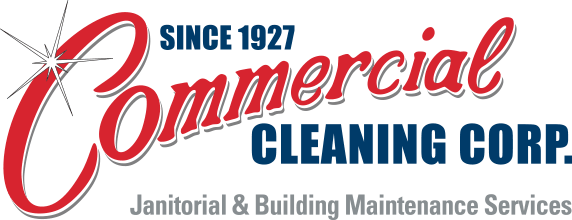Routine cleaning keeps your industrial facility operational. But when it’s time for an audit or inspection, a standard clean won’t cut it, especially when it could impact safety ratings, compliance status, or insurance coverage. Deep cleaning for audits goes beyond aesthetics to address operational readiness, regulatory adherence, and the protection of your workforce and assets.
Whether you manage a manufacturing plant, warehouse, chemical processing site, or heavy industrial facility, a clean and compliant environment plays a vital role in passing inspections and maintaining peak performance.
Here’s why deep cleaning is essential and how your team can approach it with audit readiness in mind.
Why Audit-Ready Cleaning Matters
Inspections from agencies like OSHA, the FDA, or third-party auditors don’t simply assess paperwork; they evaluate your entire environment, plus all the nooks and crannies. Dust accumulation on equipment, spills left unattended, debris in walkways, or poorly maintained ventilation can trigger citations, operational shutdowns, or worse.
OSHA regulations are especially relevant. They dictate that facilities must ensure “all places of employment, passageways, storerooms, service rooms, and walking-working surfaces are kept in a clean, orderly, and sanitary condition” and that workroom floors are clean and dry to avoid slips, trips, and falls.1
For industrial facilities that involve chemicals, heavy machinery, and high foot traffic, this regulation is particularly vital. The stakes are high, and preparing your facility requires a comprehensive and targeted approach. That’s where smart warehouse cleaning strategies and audit-ready facility cleaning plays a central role.
Avoid Fines with a Cost-Saving Cleaning Approach
While deep cleaning requires time and planning, it can significantly reduce long-term costs. Facilities that fail inspections due to unclean or unsafe conditions may face fines, legal action, or forced shutdowns that disrupt production. Investing in deep cleaning for audits helps prevent these penalties and confirms you’re ready to operate without interruption. It’s a proactive measure that protects your bottom line, turning cleaning from a cost center into a compliance and savings strategy.
Different Facilities, Different Industrial Cleaning Needs
Each type of industrial facility has unique challenges when it comes to cleaning for inspections.
- Manufacturing Plants: With production lines running daily, surfaces can collect dust, grease, and particulate matter. Deep cleaning must include equipment exteriors, overheads, and hard-to-reach areas that accumulate grime over time.
- Warehousing & Logistics Centers: Storage racks, loading docks, and high-traffic zones demand thorough floor and wall cleaning to remove skid marks, debris, and potential trip hazards.
- Chemical Processing Facilities: Due to the sensitive nature of the materials involved in chemical processing plants, specialized cleaning protocols are necessary to reduce risk and meet hygiene regulations.
- Heavy Industrial Facilities: These environments often deal with oil, metal shavings, and residues from machinery. A robust industrial cleaning strategy is required to address these contaminants right at the source.
What Makes a Facility “Audit-Ready”?
A truly audit-ready facility is one that can demonstrate cleanliness, safety, and compliance on demand. This involves:
- Detailed Documentation: Cleaning logs, safety checklists, and Material Safety Data Sheets (MSDS) should be up to date and easy to access.
- High-Touch Surface Disinfection: Surfaces that are regularly handled by workers, like control panels, railings, machinery buttons, must be cleaned and disinfected thoroughly and frequently.
- Floor & Walkway Maintenance: Clear, dry, and debris-free flooring is an OSHA requirement and is critical for workplace safety and audit success.
- Ventilation & Air Quality: Dust accumulation in ducts or clogged filters can contribute to poor indoor air quality and safety violations.
- Hard-to-Reach Areas: Overhead piping, lighting, storage racks, and behind-equipment spaces must be addressed in any industrial facility deep cleaning plan.
Best Practices for Deep Cleaning Before Inspections
To achieve peak performance and compliance, a facility must move beyond reactive cleaning. Here are some essential audit cleaning procedures.
1. Start with an Assessment
Conduct a full walkthrough of your facility with a cleaning professional like Commercial Cleaning Corporation. Identify high-risk areas based on previous inspection reports, production processes, and traffic levels. These areas may be prioritized in your custom industrial cleaning plan.
2. Schedule Targeted Deep Cleaning
Timing matters. Conduct your deep cleaning close enough to the audit or inspection that results are still visible, but with enough buffer to correct any last-minute issues. Focus on high-dust zones (ceilings, vents, machinery tops), floor sanitation and spill cleanup, restroom and break area disinfection, and loading docks and entry points.
3. Use Industrial-Grade Equipment
Not all cleaning tools are created equal. Commercial cleaning services that specialize in industrial environments can bring advanced tools like HEPA vacuums, floor scrubbers, pressure washers, and industrial degreasers to get the job done right.
4. Create a Maintenance Plan
Inspections are usually unannounced. Maintain a regular cleaning schedule so that your facility is always in an inspection-ready state. A combination of daily maintenance and scheduled deep cleaning with a provider will help prevent compliance lapses and avoid fines.
Working with a Professional Partner
Partnering with a professional commercial cleaning company ensures consistency, efficiency, and a tailored approach. Experienced teams understand OSHA inspection prep and can address facility inspection cleaning requirements with precision.
At Commercial Cleaning Corporation, we offer deep cleaning for audits tailored to the unique environments of industrial facilities. Our team understands that audit cleaning procedures aren’t one-size-fits-all. Whether you’re managing a manufacturing floor or a heavy industrial plant, we deliver scalable and specialized commercial cleaning services that align with your facility’s operations and industry standards.
Prepare Now & Perform Better
Audits and inspections shouldn’t be moments of panic (ideally!). With a proactive approach to cleaning and maintenance, they can become great opportunities to showcase your commitment to safety, compliance, and operational excellence.
Investing in audit-ready facility cleaning helps protect your reputation, prevent costly violations, and keep your operations running without interruption. It also assures employees that your business is a responsible place to work that can be trusted to take care of its property and team members. From cleaning before inspections to maintaining everyday safety standards, a strategic deep cleaning plan is a smart step for any facility leader.
Start planning now. Contact us today to schedule your warehouse cleaning consultation and get everything squared away before the big day arrives.
Sources:


One thought on “Deep Cleaning for Peak Performance: Preparing Your Industrial Facility for Audits & Inspections”
Comments are closed.